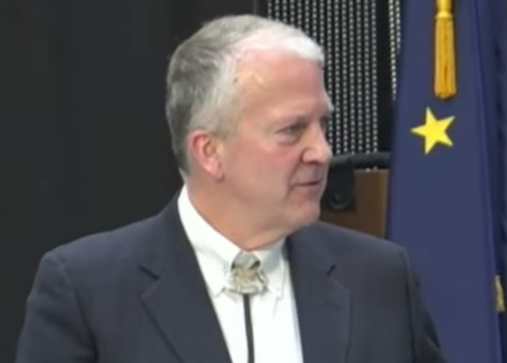Secretary of the Navy Ray Mabus announced today the next five Navy ships; three Arleigh Burke class guided-missile destroyers, the USS John Finn, the USS Ralph Johnson, and the USS Rafael Peralta, and two littoral combat ships (LCS), the USS Sioux City and the USS Omaha.
Mabus named the three destroyers after Navy and Marine Corps heroes whose actions occurred during different conflicts which spanned several decades, but were united in their uncommon valor. The littoral combat ships were named after two American communities.
John Finn, who retired as a lieutenant, received the Medal of Honor from Adm. Chester Nimitz for displaying “magnificent courage in the face of almost certain death” during the Japanese attack on military installations in Hawaii during Pearl Harbor. Marine Corps Pfc. Ralph Henry Johnson was posthumously awarded the Medal of Honor for shouting a warning to his fellow Marines and hurling himself on an explosive device, saving the life of one Marine and preventing the enemy from penetrating his sector of the patrol’s perimeter during the Vietnam War. Marine Corps Staff Sgt. Rafael Peralta was posthumously awarded the Navy Cross for selflessly covering a grenade with his body to save his fellow Marines from the blast during Operation Iraqi Freedom.
“Finn, Johnson and Peralta have all been recognized with some of our nation’s highest awards,” said Mabus. “I want to ensure their service and sacrifice will be known by today’s sailors and Marines and honored for several decades to come by a new generation of Americans and people from around the world who will come in contact with these ships.”
The Arleigh Burke class destroyers will be able to conduct a variety of operations, from peacetime presence and crisis management to sea control and power projection. All three ships will be capable of fighting air, surface and subsurface battles simultaneously and will contain a myriad of offensive and defensive weapons designed to support maritime warfare in keeping with the Navy’s ability to execute the Department of Defense’ defense strategy.
“The littoral combat ship is a major part of the future of our Navy,” Mabus said, pointing out LCS is fast, agile, and operates with a smaller crew and can perform operations in both shallow and deep waters.
“I chose the name for our two new littoral combat ships after Midwestern cities from America’s heartland, to honor the patriotic, hard-working citizens of Sioux City, Iowa, and Omaha, Nebraska, for their support of and contributions to the military.”
Sioux City and Omaha will be outfitted with reconfigurable payloads, called mission packages, which can be changed out quickly as combat needs demand. These mission packages are supported by special detachments that will deploy manned and unmanned vehicles and sensors in support of mine, undersea and surface warfare missions.
Marinette Marine in Marinette, Wis., will build the Freedom variant, the USS Sioux City, which will be 378 feet in length, have a waterline beam of 57 feet, displace approximately 3,000 tons, and make speed in excess of 40 knots. Austal USA in Mobile, Ala., will build the Independence variant, the USS Omaha, which will be 419 feet in length, have a waterline beam of 103 feet, displace approximately 3,000 tons, and make speed in excess of 40 knots.
Source: Department of Defence







